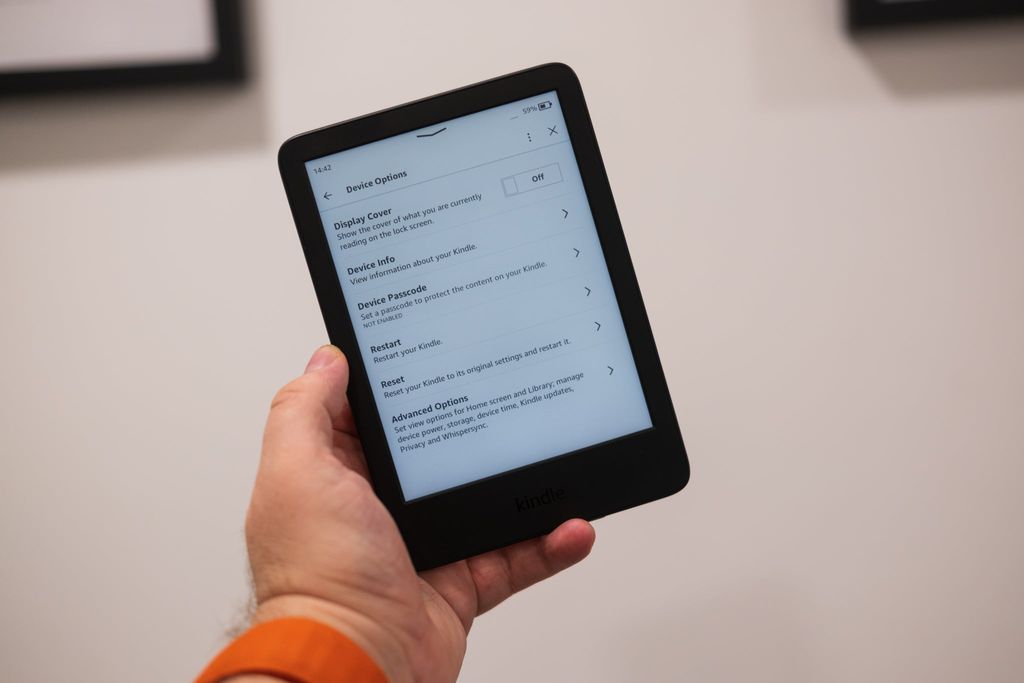Kindle is a popular e-reader device developed by Amazon that allows users to read digital books and other content. It offers a range of features and benefits, but also has some drawbacks. In this article, we will explore the pros and cons of Kindle and discuss whether it is worth investing in. Here are the key takeaways:
Key Takeaways
- Kindle provides convenience and portability, allowing users to carry a vast selection of books in a single device.
- The E-ink display of Kindle provides a reading experience similar to that of a physical book, reducing eye strain.
- With a long battery life, Kindle can last for weeks or even months on a single charge.
- Kindle has limited functionality compared to other devices, as it is primarily designed for reading purposes.
- Extended use of Kindle may lead to eye strain and discomfort, especially for those who read for long periods of time.
What is Kindle?

History of Kindle
The Kindle, introduced by Amazon in 2007, revolutionized the way people read books. It was the first e-reader to gain widespread popularity and paved the way for the digital reading revolution. With its sleek design and lightweight build, the Kindle made it possible for readers to carry thousands of books in a single device, eliminating the need for bulky physical books. This convenience and portability are two of the key advantages of the Kindle.
Features of Kindle
The Kindle offers a range of features that enhance the reading experience. One of the standout features is the E-ink display, which mimics the appearance of ink on paper and reduces eye strain. This makes reading on the Kindle more comfortable, especially for long periods. Additionally, the long battery life of the Kindle is a major advantage. With weeks of battery life, users can enjoy uninterrupted reading without the need for frequent charging.
Another notable feature of the Kindle is its vast selection of books. With access to millions of titles, readers have an extensive library at their fingertips. This allows for easy exploration of different genres and authors, making it a great device for avid readers. Furthermore, the Kindle’s convenience and portability cannot be overlooked. It is lightweight and compact, making it easy to carry around and read on the go.
In summary, the features of the Kindle, including the E-ink display, long battery life, vast selection of books, and convenience and portability, make it a compelling device for book lovers.
Types of Kindle
There are several types of Kindle available, each offering unique features and capabilities. The most popular models include the Kindle Paperwhite, Kindle Oasis, and Kindle Voyage. The Kindle Paperwhite is a great option for casual readers, with its lightweight design and built-in adjustable light for reading in any environment. The Kindle Oasis is the premium model, offering a larger display, waterproof design, and physical page-turn buttons for a more immersive reading experience. The Kindle Voyage is a mid-range option, with a high-resolution display and adaptive front light for comfortable reading. Each type of Kindle has its own advantages and caters to different reading preferences.
Pros of Kindle

Convenience and Portability
One of the key advantages of the Kindle is its convenience and portability. With its compact size and lightweight design, the Kindle allows you to carry thousands of books in one device, making it ideal for avid readers who are always on the go. Whether you’re traveling, commuting, or simply lounging at home, the Kindle provides easy access to your favorite books without the need for physical copies. Additionally, the Kindle’s long battery life ensures that you can enjoy hours of reading without worrying about running out of power.
Vast Selection of Books
One of the major advantages of Kindle is its vast selection of books. With millions of titles available, readers have access to a wide range of genres, authors, and topics. Whether you’re into classic literature, popular fiction, or non-fiction, Kindle offers a diverse library that caters to different reading preferences. Additionally, Kindle allows you to easily discover new books through personalized recommendations based on your reading history and interests. This ensures that you never run out of options and can always find something interesting to read.
E-ink Display
The E-ink display is one of the key features of Kindle. It uses electronic ink technology to mimic the appearance of ink on paper, providing a reading experience that is easy on the eyes. The display is designed to reduce eye strain, making it comfortable to read for long periods of time. Unlike traditional LCD screens, the E-ink display does not emit blue light, which can disrupt sleep patterns. This makes Kindle a great choice for those who enjoy reading before bed. Additionally, the E-ink display is highly energy-efficient, allowing the Kindle to have a long battery life.
Long Battery Life
One of the key advantages of Kindle is its long battery life. Unlike smartphones and tablets that need to be charged frequently, Kindle can last for weeks on a single charge. This is especially beneficial for avid readers who like to take their Kindle with them on long trips or vacations. With a long battery life, users can enjoy uninterrupted reading without worrying about running out of power. It also makes Kindle a great companion for outdoor activities or situations where access to a power source is limited.
Cons of Kindle

Limited Functionality
One of the main drawbacks of Kindle is its limited functionality. While Kindle is primarily designed for reading e-books, it lacks the versatility of a tablet or smartphone. Unlike these devices, Kindle cannot run apps or access the internet for browsing, streaming, or other activities. This means that if you’re looking for a device that can do more than just reading, Kindle may not be the best choice for you. However, if your main focus is on reading and you don’t need the additional features, Kindle can still be a valuable device for book lovers.
Eye Strain
One potential drawback of using a Kindle is the eye strain that some users may experience. Reading on a screen for extended periods of time can cause discomfort and fatigue in the eyes. However, it’s important to note that Kindle devices are designed with features to minimize eye strain, such as adjustable font sizes, adjustable screen brightness, and the use of e-ink technology. Additionally, taking regular breaks and practicing good reading habits, such as maintaining proper posture and using proper lighting, can help reduce the risk of eye strain while using a Kindle.
Lack of Physical Interaction
One of the drawbacks of using a Kindle is the lack of physical interaction with the device. Unlike traditional books, which allow readers to physically flip through pages and feel the weight of the book in their hands, Kindle devices rely solely on touchscreens and buttons for navigation. While this may not be a major concern for some readers, others may miss the tactile experience of reading a physical book.
Additionally, the lack of physical interaction can also limit certain reading experiences. For example, Kindle devices do not support annotations or highlighting with a pen or pencil, which can be useful for students or individuals who like to mark up their books. Instead, users must rely on digital highlighting and note-taking features, which may not provide the same level of precision or personalization.
Despite these limitations, Kindle devices offer a range of other features and benefits that make them a popular choice for many readers. From the convenience and portability to the vast selection of books available, Kindle devices provide a modern and efficient way to enjoy reading.
Dependency on Technology
One of the main concerns with using a Kindle is its dependency on technology. As an e-reader, the Kindle relies on electronic devices and internet connectivity to function properly. This means that if you don’t have access to a device or a stable internet connection, you won’t be able to use your Kindle to its full potential. Additionally, the Kindle requires regular software updates to ensure optimal performance and security. While these updates are necessary, they can sometimes be inconvenient and time-consuming. It’s important to consider your reliance on technology and your access to devices and internet before investing in a Kindle.
Is Kindle Worth It?

Cost vs. Value
When considering the cost of a Kindle, it’s important to weigh it against the value it provides. While the initial investment may seem high, especially when compared to the cost of physical books, the long-term benefits of owning a Kindle can outweigh the upfront expense. With a Kindle, you have access to a vast library of books at your fingertips, making it a convenient and portable storage solution for book lovers. Additionally, the ability to carry multiple books in one device eliminates the need for bulky physical books, saving space and making it easier to travel with your favorite reads.
Personal Reading Preferences
When considering whether Kindle is worth it, personal reading preferences play a crucial role. The design of the Kindle device is sleek and lightweight, making it comfortable to hold for long reading sessions. Additionally, the design of the Kindle’s E-ink display mimics the appearance of real paper, reducing eye strain and providing a more enjoyable reading experience. Some readers may prefer the feel of a physical book, but the convenience and portability of the Kindle make it a popular choice for those who prioritize ease of use and access to a vast selection of books.
Integration with Amazon Ecosystem
The Kindle is seamlessly integrated with the Amazon ecosystem, providing users with a comprehensive reading experience. Amazon’s vast library of ebooks, audiobooks, and magazines can be easily accessed and downloaded directly to the Kindle device. This integration allows users to browse, purchase, and manage their digital content all in one place.
Additionally, the Kindle is synced with the user’s Amazon account, ensuring that their reading progress, bookmarks, and highlights are automatically saved and synchronized across devices. This means that users can seamlessly switch between reading on their Kindle device, smartphone, or tablet without losing their place in the book.
Furthermore, the integration with the Amazon ecosystem extends to other services such as Kindle Unlimited and Prime Reading. Kindle Unlimited offers a vast selection of books and audiobooks that can be borrowed and enjoyed for a monthly subscription fee, while Prime Reading provides access to a rotating selection of ebooks and magazines for Amazon Prime members.
In summary, the integration with the Amazon ecosystem enhances the Kindle reading experience by providing a seamless and convenient way to access, manage, and enjoy a wide range of digital content.
Long-Term Investment
When considering the long-term investment of purchasing a Kindle, there are several factors to take into account. One of the key advantages of the Kindle is its ability to store a vast library of books in a compact device. With the increasing popularity of e-books, having a Kindle allows you to access a wide range of titles without the need for physical storage space. This can be particularly beneficial for avid readers who enjoy having a large selection of books at their fingertips.
Another aspect to consider is the cost savings over time. While the initial purchase of a Kindle may seem expensive, especially when compared to the cost of a single physical book, the long-term savings can be significant. E-books are often cheaper than their physical counterparts, and many classics and public domain books are available for free. Over time, these savings can add up, making the Kindle a cost-effective option for book lovers.
Additionally, the Kindle offers a seamless integration with the Amazon ecosystem. This means that you can easily purchase and download books directly from the Kindle store, sync your reading progress across devices, and access additional features such as Kindle Unlimited and Prime Reading. If you are already an Amazon customer, this integration can enhance your reading experience and make managing your digital library more convenient.
Lastly, it’s important to consider the longevity of the Kindle as a device. With regular software updates and improvements, the Kindle continues to evolve and adapt to the changing needs of readers. This ensures that your investment in a Kindle will remain relevant and functional for years to come.
In conclusion, the Kindle offers a compelling long-term investment for book enthusiasts. With its convenience, cost savings, integration with the Amazon ecosystem, and ongoing updates, the Kindle provides a comprehensive reading experience that is worth considering.
Conclusion
In conclusion, the Kindle offers numerous benefits for book lovers. Its portability, vast selection of books, and adjustable reading experience make it a convenient and enjoyable device. However, there are also drawbacks to consider, such as the lack of physical book experience and potential eye strain. Ultimately, whether the Kindle is worth it depends on individual preferences and reading habits. For avid readers who value convenience and variety, the Kindle can be a valuable investment. However, those who prefer the tactile experience of physical books may find it less appealing. Overall, the Kindle is a versatile device that has revolutionized the way we read, but it is important to weigh the pros and cons before making a decision.
Frequently Asked Questions
Can I read books on Kindle without an internet connection?
Yes, you can download books to your Kindle device and read them offline.
Can I read Kindle books on other devices?
Yes, you can read Kindle books on other devices using the Kindle app.
How long does the battery last on a Kindle?
Kindle devices have a long battery life and can last for weeks on a single charge.
Can I borrow books from the library on Kindle?
Yes, you can borrow e-books from many public libraries and read them on your Kindle.
Can I highlight and take notes on Kindle books?
Yes, you can highlight text and take notes while reading Kindle books.
Can I adjust the font size on Kindle?
Yes, you can customize the font size and adjust it according to your preference.




